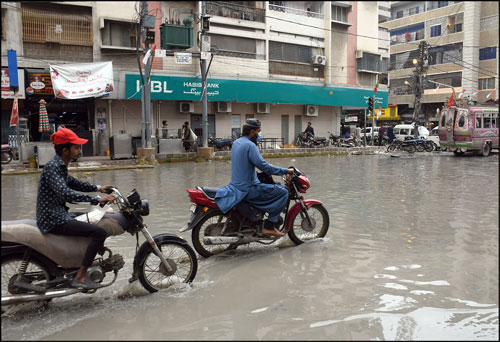The recent monsoon rains have destroyed the sewerage infrastructure of Karachi as it could not sustain the huge flow of rainwater and the stinking sewage and slush oozed out on the roads and streets, creating problems for citizens.
According to details, municipal bodies opened up manholes to drain out the rainwater in an attempt to hide their incompetence. More than 200 large and small sewerage lines burst due to the pressure of rainwater.
Rainwater mixed with foul-smelling sewage has accumulated in several areas of the city, including PIDC, University Road, Liaquatabad, Nazimabad, Mehmoodabad, Model Colony, Korangi, Landhi, Old Sabzi Mandi, Green Tower, and Jaffar Tayyar Society.
The Karachi Water and Sewerage Board (KWSB) has started work to repair and replace the sewerage lines, while the Board’s MD has requested for a grant of Rs2 billion from the Sindh government for this purpose.
The sewerage system could not sustain the rainwater pressure due to the incompetence and absence of a strategy by the local bodies. Municipal agencies opened up the manholes to drain out the rainwater as the city administration had failed to clean the main nullahs.
The rainwater built up pressure on the sewerage lines of different diameters, including 72, 66, 48, 36, 24 inches, which burst in different areas, and the filthy slush oozed out of the sewers and onto the roads and streets in different localities.
Citizens in the Old City Area, Lines Area, Khudadad Colony, Mehmoodabad, Landhi, Korangi, New Karachi, Buffer Zone, Liaquatabad, Nazimabad, Gulbarg, Sharafabad, Malir, Muhammad Ali Society, Dhuraji Colony, Azizabad, Gulbahar, Rizvia, Gulshan Iqbal, and Malir had to bear the agony of living in streets inundated with foul-smelling slush.
The water board has started repairing and replacing the sewerage lines, but the managing director has written a letter to the Sindh government requesting for a grant of Rs2 billion for the repairs of more than 200 sewerage lines.










